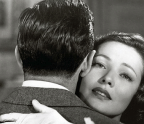
In the summer of 1953, Charles Wong’s photo-essay “1952/The Year of the Dragon” was published in the fifth issue of Aperture. The impetus for Wong’s piece—a carefully designed sequence of photography and poetry—was an extortion scheme that had plagued the immigrant community in San Francisco’s Chinatown. The perpetrators peppered vulnerable immigrants with fake notices about kidnapped family members in China. Cut off from communication by the Communist Revolution, many of the scheme’s victims opted to pay an expensive ransom, while others made the difficult decision to forsake their loved ones to imagined captors. The themes of Wong’s work—immigrant displacement, vulnerability, memory, and intergenerational trauma—reveal wounds of the Asian American immigrant experience that feel no less raw today. Wong’s piece might be read as a statement about the impossible choices and pain of forgetting that building a new life in this country continually demands.
As guest editor of this issue of , I have foundgenerations of artists have used the medium of photography to grapple with questions of visibility, belonging, and what it means to be Asian American. Just as there is no single point where Asian American experience converges, photography produced by Asian American image makers encompasses disparate ways of viewing the world—and demands to be approached as such. But to seek connection and coherence among these perspectives is to acknowledge a shared story of immigration to the United States that relates to a long legacy of exclusionary policies and struggles for recognition and citizenship. Being and becoming Asian in America is an unfixed, constantly evolving, and expansive process, and photography plays an essential role in envisioning it.






